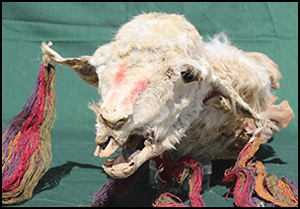Article contents
Inka llama offerings from Tambo Viejo, Acari Valley, Peru
Published online by Cambridge University Press: 22 October 2020
Abstract

Llamas were the preferred sacrificial animals of the Inka Empire, their ritual value second only to that of human beings. Recent archaeological excavations at the Inka settlement of Tambo Viejo in the Acari Valley on the Peruvian south coast have revealed a number of ritually sacrificed llamas in a unique context. This new evidence demonstrates that the establishment of Tambo Viejo as a provincial Inka centre involved the performance of ritual practices that included the dedicatory sacrifice of domesticated animals. These rituals materialised Inka imperial ideology and ultimately enabled the legitimisation of Inka presence in a conquered location.
- Type
- Research Article
- Information
- Copyright
- Copyright © The Author(s), 2020. Published by Cambridge University Press on behalf of Antiquity Publications Ltd
References
- 5
- Cited by




